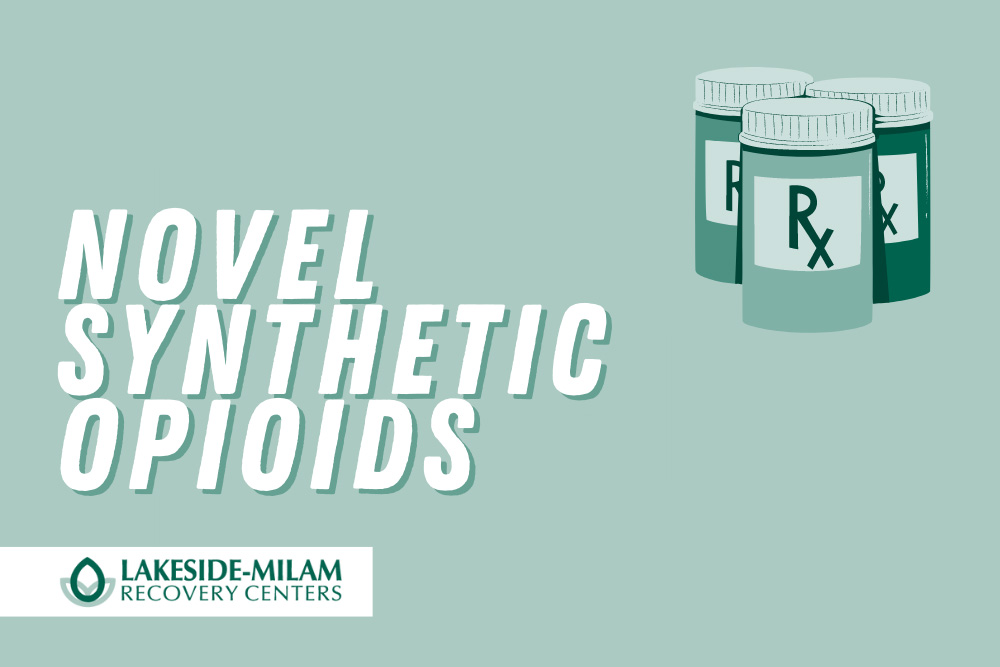Since novel synthetic opioids have emerged on the recreational drug market, they’ve introduced a new wave of America’s drug epidemic, worsening the public health threat. These drugs are especially dangerous because they pose a high overdose risk and continue to circumvent international drug regulations and bans.
Novel synthetic opioids include fentanyl, U-47700 and other structurally similar substances such as acetyl fentanyl, butyryl fentanyl, beta-hydroxythiofentanyl, and furanyl fentanyl.
What Are Novel Synthetic Opioids?
Fentanyl is the most widely known synthetic opioid. Health professionals have used it as a painkiller since the 1960s, and the FDA approved it in the 1970s.
Like all opioids, novel synthetic opioids bind to specific brain receptors. However, they take effect much more rapidly and in smaller doses. For example, fentanyl is 50 times more potent than heroin, and a dose as small as two milligrams can be fatal.
Where Do NSOs Come From?
Though opioids such as morphine derive from the seed pod of some poppy plants, novel synthetic opioids come from a lab. It’s possible to buy them online either as stand-alone products or counterfeit prescription medications.
As more states pass restrictive laws intended to limit access to opioid prescriptions, many people who depend on opioid drugs have started getting them illegally. Unfortunately, they could be buying fentanyl-laced drugs without realizing it. Because novel synthetic opioids are human-made, they are cheaper and easier to obtain, so drug dealers may cut a batch with fentanyl to make it stretch further.
Why NSOs Are So Dangerous
Whether sold as a powder or blended with drugs like meth, cocaine, and heroin, illicit black-market fentanyl is the driving force behind the recent sharp increase in opioid overdose deaths. People who unknowingly take a drug adulterated with a novel synthetic opioid are at heightened risk of overdosing. While all opioids suppress central nervous function, NSOs do so more rapidly, which can cause a fatal overdose within minutes.
During an overdose, essential brain and body functions start shutting down. Early warning signs of an overdose include discoordination, disorientation, and dizziness. An overdose victim may also have pale, clammy, or bluish skin, an erratic heart rate, and severe stomach pains. Their body might go limp and become unresponsive, even if they appear to be awake.
If someone falls unconscious after taking opioids, it’s dangerous to assume they will be fine if you let them sleep it off. An unconscious person can choke on vomit or gradually stop breathing. Instead, immediately dial 911, then do your best to keep the overdose victim alert and upright while you wait for the ambulance to arrive.
A Long, Proud History of Treatment Success
Since 1983, Lakeside-Milam Recovery Centers have provided proven, effective treatment for the disease of addiction. Our accredited, nationally recognized clinical program is unsurpassed in the industry, and we have helped more than 100,000 people rebuild their lives and start their recovery journeys. When you are ready to take the first step, our admissions team is standing by 24/7 to speak with you.






